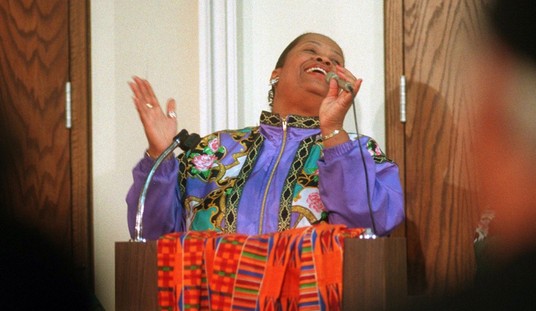There have been many critiques of polling errors in recent years, especially after the 2016 presidential election. However, polling has always tended to skew toward the Democrats, and the results in several races in the last decade have been very surprising for some politicos.
If you pay attention to the polling right now, however, there are some signs that the same errors that have overinflated Democrats’ confidence in the past might be doing so again.
Polling analyst Nate Cohn at the New York Times has a piece out this morning that throws a bit of cold water on Democrats’ expectations for keeping the Senate.
Ahead of the last presidential election, we created a website tracking the latest polls — internally, we called it a “polling diary.” Despite a tough polling cycle, one feature proved to be particularly helpful: a table showing what would happen if the 2020 polls were as “wrong” as they were in 2016, when pollsters systematically underestimated Donald J. Trump’s strength against Hillary Clinton.
[…]
We created this poll error table for a reason: Early in the 2020 cycle, we noticed that Joe Biden seemed to be outperforming Mrs. Clinton in the same places where the polls overestimated her four years earlier. That pattern didn’t necessarily mean the polls would be wrong — it could have just reflected Mr. Biden’s promised strength among white working-class voters, for instance — but it was a warning sign.
That warning sign is flashing again: Democratic Senate candidates are outrunning expectations in the same places where the polls overestimated Mr. Biden in 2020 and Mrs. Clinton in 2016.
Cohn points out that Wisconsin currently looks like it’s very in play for Democrats, where incumbent Senator Ron Johnson is in trouble according to the polls. However, he then explains that Wisconsin was “ground zero” for polling error in 2020. Polls during the presidential election cycle overestimated Biden’s strength by 8 percentage points.
“It raises the possibility that the apparent Democratic strength in Wisconsin and elsewhere is a mirage,” Cohn explains. “An artifact of persistent and unaddressed biases in survey research.”
So that makes the lay of the land very different for the Senate elections. Polling in Georgia is solidifying for Herschel Walker over Democratic Sen. Raphael Warnock. What’s more, Sen. Catherine Cortez Masto of Nevada is at risk of losing to Republican challenger Adam Laxalt.
NEW: Sen. Cortez Masto in real trouble of losing her seat in Nevada to Republican Adam Laxalt.
After months of significantly outspending Laxalt, the two remain within the margin of error.
w/ @sahilkapur https://t.co/rJTSmDK6Um
— Natasha Korecki (@natashakorecki) September 12, 2022
Arizona, a traditionally red state nonetheless, sees Sen. Mark Kelly battling for his career against Blake Masters. While Kelly is polling higher in Arizona right now, Cohn’s data shows Arizona overstated Biden’s support in the state in 2020. As did Pennsylvania, where Mehmet Oz and John Fetterman are fighting over an open seat.
Even if Pennsylvania falls to the Democrats, winning any two of the other seats means GOP control of the Senate. If Cohn’s analysis is correct, you could see the GOP win all three.

But why does this continue to happen?
If the polls are wrong yet again, it will not be hard to explain. Most pollsters haven’t made significant methodological changes since the last election. The major polling community post-mortem declared that it was “impossible” to definitively ascertain what went wrong in the 2020 election.
The pattern of Democratic strength isn’t the only sign that the polls might still be off in similar ways. Since the Supreme Court’s Dobbs decision on abortion, some pollsters have said they’re seeing the familiar signs of nonresponse bias — when people who don’t respond to a poll are meaningfully different from those who participate — creeping back into their surveys.
Brian Stryker, a partner at Impact Research (Mr. Biden is a client), told me that his polling firm was getting “a ton of Democratic responses” in recent surveys, especially in “the familiar places” where the polls have erred in recent cycles.
It’s not a guarantee that the polling is as wrong as it was in the past, but the signs are there. That’s a heavy dose of cold water on Democrats that believe they are seeing a polling surge in the wake of the Dobbs decision and legislative victories for their party. But, as Cohn says, it could very well be a mirage.













Join the conversation as a VIP Member